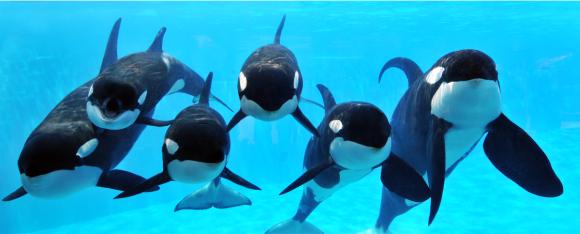
Photo: SeaWorld
In just three years since the release of the documentary, Blackfish, the world of captive orcs in the United States has undergone dramatic change. The 2013 documentary focused specifically on the death of an orca trainer, Dawn Brancheau, who was killed by an orca named Tillikum at SeaWorld Orlando in 2010. The documentary was also a broad indictment of the industry of breeding and training orcas to perform for public performances in large marine-parks.
The effect of the documentary was immediate and stunning. Despite a public relations campaign to counter the documentary, attendance and revenues at the company’s marine parks began to drop, in what became known as the “Blackfish Effect.” SeaWorld reported a 4th quarter loss of $25.4 million blamed on lower park attendance the year following the release of Blackfish. By December 2014, about a year and a half after the film’s theatrical premiere, the stock price of SeaWorld had declined by 60 percent.
SeaWorld also came under legal and legislative pressures. In 2014, a previous OSHA ruling banning trainers from being in the water with orcas was upheld. There were also calls for legislation to ban captive orca breeding.
In March of this year, SeaWorld announced the end of their orca breeding program. The 24 orcas currently held at parks in California, Texas and Florida will be the last generation of captive orcas at SeaWorld. The company will also be ending the orca entertainment in their parks, describing the new programming as “new, inspiring, natural orca encounters rather than theatrical shows.”
SeaWorld’s actions were ahead of legislation in California. On September 14th, the California Orca Protection Act, which bans orca breeding and use in theatrical performances, was signed and will go into effect in 2017. Use of captive orcas for “educational presentations” is allowed by the law.
SeaWorld plans on caring for their captive orcas for the rest of their lives. Critics have argued that the whales should be released. In an op-ed in the LA Times, Joel Manby, president and CEO of SeaWorld, argued that this would not be good for the orcas: Some critics want us to go even further; they want us to “set free” the orcas currently in our care. But that’s not a wise option.
Most of our orcas were born at SeaWorld, and those that were born in the wild have been in our parks for the majority of their lives. If we release them into the ocean, they will likely die. In fact, no orca or dolphin born under human care has ever survived release into the wild. Even the attempt to return the whale from “Free Willy,” Keiko, who was born in the wild, was a failure.
For as long as they live, the orcas at SeaWorld will stay in our parks. They’ll continue to receive the highest-quality care, based on the latest advances in marine veterinary medicine, science and zoological best practices.
While the “Blackfish effect” has dramatically changed the treatment of captive orcas in the United States, there a still roughly 30 more captive orcas in seven countries around the world.
